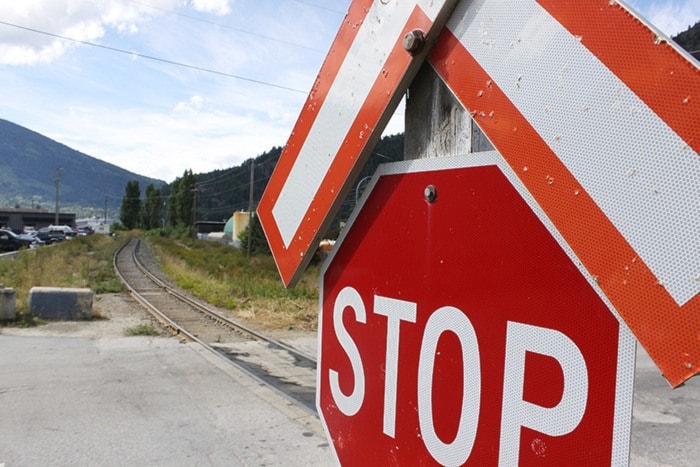One Kootenay woman is adding her voice to a growing chorus of people wanting accountability for what travels down railways within communities.
Delina Underwood sees the train go by her home several times a day. She says chemicals such as anhydrous ammonia, liquid sulfur dioxide and hydrogen chloride being used by the smelter in Trail are transported along the Cranbrook-Trail corridor.
“While this use is understandable in heavy industry, what is not understandable is the willingness of CP Rail to risk the lives of every one who lives close to or in the area of these rail lines,” she says.
This month about 60 Calgary residents gathered outside the Alyth Yard to protest after a CP train derailed in their community. The train was carrying flammable liquids and though no one was injured 142 homes were evacuated.
Residents of Lac-Megantic, Quebec weren’t as lucky. Two months ago a runaway train crashed and spilled 7.5 million litres of crude. Fires and explosions destroyed nearly 50 buildings and killed 47 people. The disaster is expected to take three years to be cleaned up.
Back in the Kootenays, Underwood says her worries are even more compounded by the fact CP Rail has cut four out of seven of its Cranbrook-based carmen, whose job it is to inspect rail cars as they pass through Cranbrook, including those carrying dangerous goods.
“The fact that they could consider reducing this very important safety aspect of their operation is mind numbing,” she says. “After the effects of the tanker jet fuel spill in the Slocan Valley, I think everyone can see just how devastating financially, personally and environmentally these types of accidents can cause.”
CP Rail spokesman Kevin Hyrsak says the company takes safety “very seriously. It is a focus that will never change.”
“Routine and required train inspections continue to be performed at the required locations as they always have with staffing levels required to maintain the necessary train inspections,” he says.
Their safety program includes an inspection protocol that has both visual and electronic inspections for the thousands of miles of track over which they operate, Hyrsak explains.
“When it comes to our trains, in addition to a series of visual inspections, our track system features high-tech track-side warning devices that monitor the train’s performance throughout its journey,” he says.
Hyrsak explains that CP doesn’t provide specifics on what they are moving through communities for security reasons. However, there is a protocol in place with local emergency responders to deal with spills of materials
“Working directly with communities along our network is a priority, which includes following an established process that is in place in which our railway ensures local officials and emergency providers have access to information. We work directly with them,” he says.
Underwood would like to see the public more aware about what’s inside the cars travelling the tracks. “It’s not just lumber,” she said. “In the wake of the disaster as Lac Megantic I think it is worth a closer look.”
